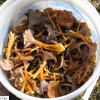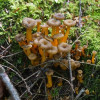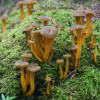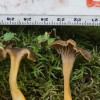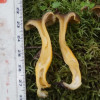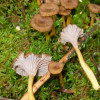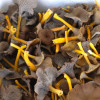Edible, therapeutic and toxic mushrooms
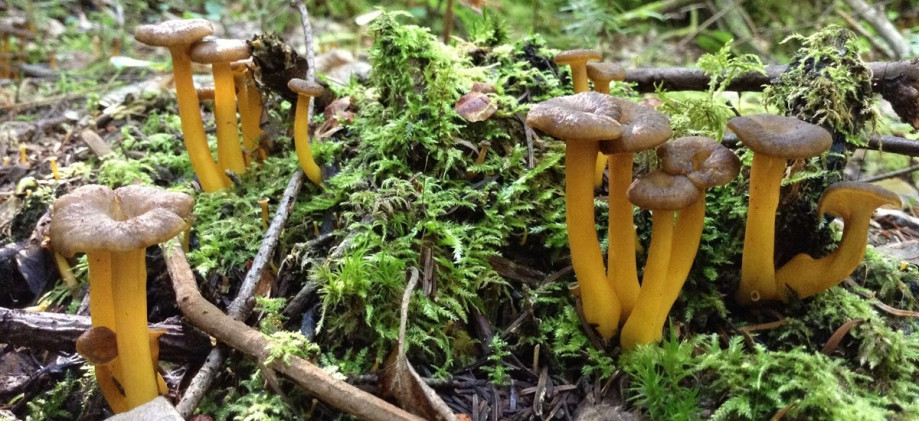
Habitat
Among mosses, in humid environments, in association with conifers, mainly Black Spruce and Tamarack (rarely on dry lands), from the end of August to snow.
Abundant in peatlands of the boreal forest where the quantities are calculated in tons.
Cap
Yellowish brown to blackish brown. Umbilicate, this umbilicus descends rapidly to the base of the stipe to form a hollow stipe.
Hymenium surface
Lamelliform folds, forked, spaced, decurrent, very pale gray to gray, to purplish gray.
Comments
Send a comment
For commercial crops, quality verification should be done in the field and only quality fruitbodies should be picked.
English names: Yellow Foot Chanterelle, Winter Chanterelle, Funnel Chanterelle, Trumpet Chanterelle.
Latin names: Craterellus tubaeformis, C. infundibulbiformis, Cantharellus tubaeformis.
For more informations
Formation
For those who wish to improve their knowledge, register for the Foundation's training program on this site and receive a certificate confirming the fruit of your efforts.































